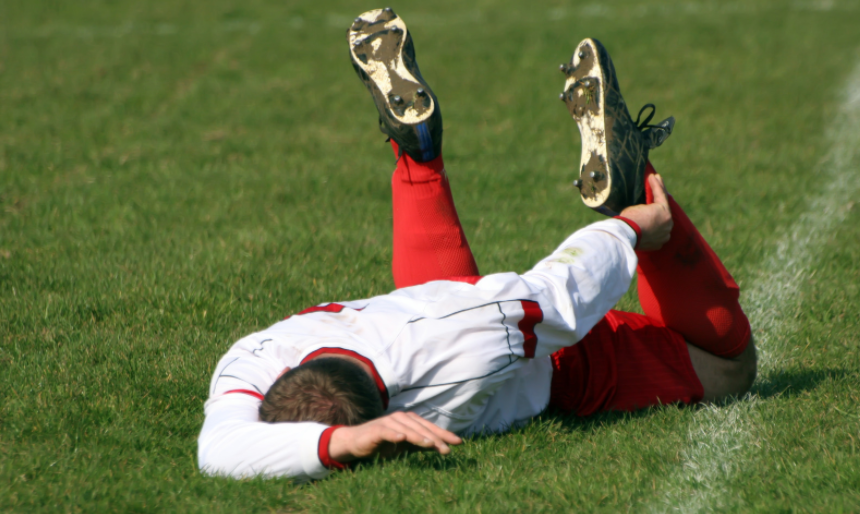Nearly half a million student-athletes are at colleges across the U.S. today. Three in four adults played sports when they were younger, and one in four U.S. adults still play a sport regularly. Among these, team sports are the most popular. It’s clear that as a nation, we love playing sports.
But it’s not a risk-free endeavor. In fact, every year, half of all Americans experience a musculoskeletal injury that lasts for longer than three months. For athletes, this percentage is much higher, with an estimated 90 percent of student-athletes reporting a sports-related injury. In fact, 54 percent of whom have continued playing while injured.
As explored in a 2019 study published in Sports Medicine, after retiring from sports, ex-athletes have a less active lifestyle. The injuries they picked up during sports, and the physical strain they put their bodies under, presents as pain, a loss of mobility, muscle aches, and persistent injuries.

It’s essential to take care of your body while training in team sports. This doesn’t just apply to professional or semi-professional athletes. Recovery, physical therapy, massage, and proper footwear all contribute to keeping you healthy and injury-free. This will ultimately allow you to continue playing team sports for longer, and perform better. Which is what most athletes are striving for!
What are the most common sports injuries?
Some of the most common sports injuries include:
- Hip flexor strain
Due to our sedentary lifestyles, many of us are at risk of straining or injuring our hip flexors. These are the muscles that run up the top of your thighs. They’re key players in posterior chain movement, whether that’s kicking, walking, bending, or rotating. As you can imagine, these types of movements are common in team sports.
If you work in an office job all day, sitting down at your laptop, you are at risk of developing tight hip flexors. That’s because being in a seated position forces your hip flexors into a shortened position. This can cause tightness and stiffness, which results in a limited range of motion, poor posture, low back pain, and hip flexor strain.
- ACL injury
The anterior cruciate ligament (ACL) is the ligament responsible for stabilizing your knee joint. It’s located in the center of the knee, which controls rotation and forward movement of the tibia. There are approximately 100,000 to 200,000 ACL ruptures per year in the United States alone, making it one of the most common injuries among professional and recreational athletes.
It happens when you change direction too quickly, or if the knee joint is bent in an unnatural way - like side to side. Soccer has the highest amount of ACL injuries, which involves rapid direction changes and relies on knee movements to kick the ball.

- Patellofemoral Pain Syndrome (PPS) or Runner’s knee
You may have heard runner’s complain of knee pain, which is how this injury got its name. But it’s not just runners that can experience PPS. Any high-impact sport that involves jumping, running, or changing directions can cause this injury.
It’s pain around the kneecap - the patella. It can be severe, preventing walking and limiting mobility. Or it can barely be noticeable. But if it does go unnoticed, it can develop into a more serious injury.
Shop Premium Custom Insoles
- Rotator cuff injury
The rotator cuff is a group of muscles and tendons that surround the shoulder joint. A rotator cuff injury is when there is a rip or tear in these muscles or tendons. It’s common among athletes who play overhead sports like baseball, tennis, basketball, or golf.
It can also happen due to trauma like falls or collisions. That’s why athletes who play football, lacrosse, and ice hockey are also prone to this injury.
- Shin splints
Shin splints, or tibial stress syndrome, is experienced by more than three million Americans yearly. It occurs when the muscles and bones in the lower leg pull at their insertion on the tibia and it becomes inflamed. It’s caused predominantly by overuse and wearing improper footwear.
It’s not just running that causes shin splints. Any sport that involves stopping and starting, like tennis, racquetball, soccer or basketball, puts pressure on the tibia and increases your risk of shin splints.
How to avoid injuries in team sports
The NCAA posted an article about the prevalence of depression in injured athletes. It’s normal to feel stressed, irritated, depressed and unmotivated after experiencing an injury, even if you’re not a professional athlete. Physical injuries inhibit your ability to workout and consequently, can leave you feeling low.
Avoiding injury takes time and effort, but it’s worth it. Here are some tips.
- R.I.C.E method
After every practice, implement R.I.C.E. This stands for Rest, Ice, Compression, and Elevation. Resting your body allows it to recover - muscle damage is healed and your bones and joints are relieved from the stress they were under. This can prevent overuse.
Ice is anti-inflammatory and compression increases blood flow to the area, which both accelerate your body’s natural healing process. Elevation helps to drain fluid from the area, which is particularly important if you are experiencing any swelling.
Shop Premium Custom Slides
- Cross-train
Cross-training can help you to improve your performance in your given sport. If you’re a runner, try strength training to build muscle in your lower body. If you’re a swimmer, try plyometrics to increase your speed. Switching up your training will help to develop strength and mobility, to reduce your injury risk.
- Wear proper footwear
FitMyFoot has recently come out with Comfort Plus Slides. These have been specially designed for athletes to wear between games, after-training, or for performing day-to-day activities.
They are the world’s first custom slides made to order from your smartphone - custom to every curve of your foot to keep them supported, to absorb impact, and assist your foot in recovering from physical activity.
Wearing these daily will help to prevent injuries in the posterior chain, which in line with our list, are the most common injuries experienced by athletes who play team sports.


